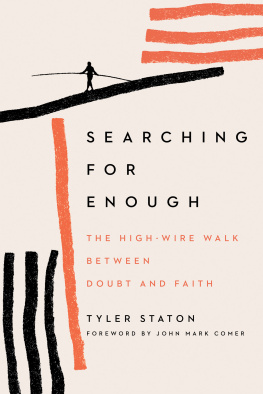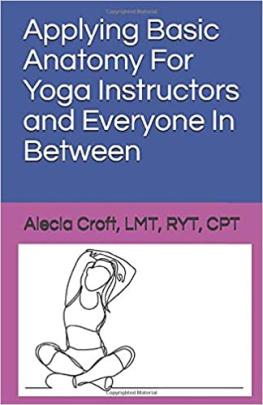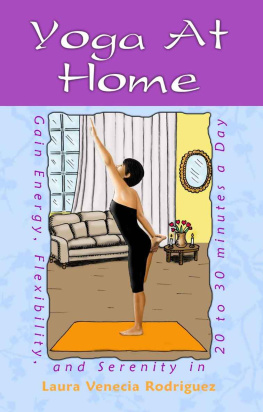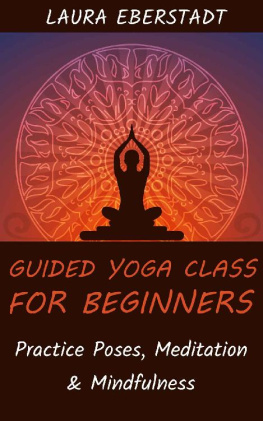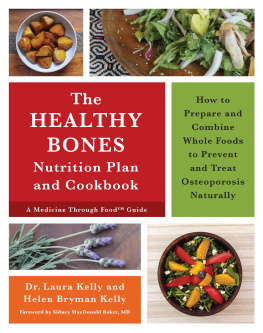Laura Staton - Yoga Bones
Here you can read online Laura Staton - Yoga Bones full text of the book (entire story) in english for free. Download pdf and epub, get meaning, cover and reviews about this ebook. year: 2021, publisher: Hachette Books, genre: Romance novel. Description of the work, (preface) as well as reviews are available. Best literature library LitArk.com created for fans of good reading and offers a wide selection of genres:
Romance novel
Science fiction
Adventure
Detective
Science
History
Home and family
Prose
Art
Politics
Computer
Non-fiction
Religion
Business
Children
Humor
Choose a favorite category and find really read worthwhile books. Enjoy immersion in the world of imagination, feel the emotions of the characters or learn something new for yourself, make an fascinating discovery.

- Book:Yoga Bones
- Author:
- Publisher:Hachette Books
- Genre:
- Year:2021
- Rating:4 / 5
- Favourites:Add to favourites
- Your mark:
- 80
- 1
- 2
- 3
- 4
- 5
Yoga Bones: summary, description and annotation
We offer to read an annotation, description, summary or preface (depends on what the author of the book "Yoga Bones" wrote himself). If you haven't found the necessary information about the book — write in the comments, we will try to find it.
Yoga Bones — read online for free the complete book (whole text) full work
Below is the text of the book, divided by pages. System saving the place of the last page read, allows you to conveniently read the book "Yoga Bones" online for free, without having to search again every time where you left off. Put a bookmark, and you can go to the page where you finished reading at any time.
Font size:
Interval:
Bookmark:
Yoga Bones presents a wonderfully simple and straightforward approach to therapeutic yoga. Laura brings her experience as an occupational therapist and a yoga practitioner together to help bridge the gap between the worlds of occupational therapy and yoga. Anatomical information, simple yoga poses, and sequences guide readers in an integrative and accessible approach to improving the quality of their lives by using yoga as a means to help ease discomfort and restore and improve function so that they can do what they find personally meaningful.
Carrie Owerko, senior-level Iyengar yoga teacher, Laban movement analyst, functional range conditioning mobility specialist, yoga therapist, and playful practice enthusiast
Yoga Bones is a knowledgeable and insightful guide for anyone interested in the interface of Western medicine and Eastern yoga practices, and how they combine to treat many physical conditions and create holistic well-being. Statons experience as both an occupational therapist and a yoga therapist comes together in a treasure trove of accessible and helpful guidance. I love this book, and I recommend it to professionals and to anyone who is seeking help with issues ranging from foot to neck pain, and everything in between.
Liz Owen, yoga therapist and coauthor of The Yoga Effect: A Proven Program for Depression and Anxiety and Yoga for a Healthy Lower Back
Lauras unique and well-received individualized yoga sessions have been enormously beneficial to appropriate patients as an adjunct to their rehabilitation programs. She applies her expertise to Yoga Bones, which provides additional treatment options that patients can use, with the advice of their physicians, to help alleviate their symptoms.
Jeffrey B. Weinberg, MD, chairman, Department of Rehabilitation Medicine, Staten Island University Hospital
Note: The information in this book is true and complete to the best of our knowledge. This book is intended only as an informative guide for those wishing to know more about health issues. In no way is this book intended to replace, countermand, or conflict with the advice given to you by your own physician. The ultimate decision concerning care should be made between you and your doctor. We strongly recommend you follow his or her advice. Information in this book is general and is offered with no guarantees on the part of the authors or Hachette Books. The authors and publisher disclaim all liability in connection with the use of this book. The names and identifying details of people associated with events described in this book have been changed. Any similarity to actual persons is coincidental.
Copyright 2021 by Laura Staton
Photographs by Julie Lemberger, julielemberger.com
Illustrations by Michael Cashmore-Hingley, cartoonalot.com
Cover design by Amanda Kain
Cover copyright 2021 by Hachette Book Group, Inc.
Hachette Book Group supports the right to free expression and the value of copyright. The purpose of copyright is to encourage writers and artists to produce the creative works that enrich our culture.
The scanning, uploading, and distribution of this book without permission is a theft of the authors intellectual property. If you would like permission to use material from the book (other than for review purposes), please contact permissions@hbgusa.com. Thank you for your support of the authors rights.
Hachette Go, an imprint of Hachette Books
Hachette Book Group
1290 Avenue of the Americas
New York, NY 10104
HachetteGo.com
Facebook.com/HachetteGo
Instagram.com/HachetteGo
First Edition: January 2021
Published by Hachette Books, an imprint of Perseus Books, LLC, a subsidiary of Hachette Book Group, Inc.
The Hachette Go and Hachette Books name and logos are trademarks of Hachette Book Group, Inc.
The publisher is not responsible for websites (or their content) that are not owned by the publisher.
Library of Congress Control Number: 2020946911
ISBNs: 978-0-306-84626-7 (paperback); 978-0-306-84625-0 (e-book)
E3-20201130-JV-NF-ORI
For my mother, Patricia, who never quite found her balance
The therapeutic practices presented in this book draw from my work as an occupational therapist and yoga instructor, my understanding of using yoga as a therapeutic modality, and an exploration of my own bodys function and dysfunction. When working with patients, I think about yoga; and when I think about yoga, I think about healing the body and mind. For me, the two practices are inexorably linked and the efforts in this book draw equally from both mediums. The yoga therapy in Yoga Bones is grounded in this mutuality and joins occupational therapy approaches with the five-thousand-year-old practice of yoga. All of the following source material has contributed to the making of Yoga Bones. I have been a devoted practitioner of Iyengar Yoga since 1998, and many of the yoga strategies presented in this book draw from these studies and my ongoing practice. I have given myself flexibility in naming the postures that constitute a hybrid of yoga and traditional therapy.
Most of the anatomical information presented in this book came from several textbooks I used as an occupational therapy student at NYU. The books I found myself returning to again and again are Clinically Oriented Anatomy, 5th ed., by Keith L. Moore and Arthur F. Dalley (Baltimore: Lippincott Williams & Wilkins, 2006) and Muscles: Testing and Function with Posture and Pain, 5th ed., by Florence Peterson Kendall, Elizabeth Kendall McCreary et al. (Baltimore: Lippincott Williams & Wilkins, 2005). Both of these books are quoted in the text of Yoga Bones. Over the years, and for this book, I also have read the work of Blandine Calais-Germain, Anatomy of Movement, rev. ed. (Seattle: Eastland Press, 2007). I also looked at Functional Anatomy of Yoga by David Keil (Chichester, England: Lotus Publishing, 2014). I have read countless academic journal articles and abstracts when trying to better understand the dimension of specific muscle function (such as the iliopsoas) or when there are conflicting perspectives about a particular condition (such as sciatica). I have tried to keep the information clear, accessible, lacking in bias, and grounded in function.
I intentionally kept my reading of other published yoga therapy and yoga books down to a minimum because I did not want to be overly influenced. I looked at Anatomy of Movement Exercises by Blandine Calais-Germain (Seattle: Eastland Press, 2018); Yoga for a Healthy Lower Back by Liz Owen and Holly Lebowitz Rossi (Boulder, CO: Shambhala Publications, 2013); The Vital Psoas Muscle: Connecting Physical, Emotional, and Spiritual Well-Being by Jo Ann Staugaard-Jones (Berkeley, CA: Lotus Publishing, 2012); B. K. S. Iyengars Light on Yoga, rev. ed. (New York: Schocken Books, 1979). I also drew on the coursework and studies from the professional yoga therapist training I completed in 2017 through Integrative Yoga Therapy, founded by Joseph and Lilian Le Page, and the teacher training Yoga for Low Back Pain presented by Loren Fishman, MD, in New York City in 2015.
My studies of occupational therapy started at NYU but have continued over the years. As professional development, I have taken yearly seminars and courses on subjects as diverse as complete shoulder rehabilitation, neurological management of spinal cord injury, therapeutic taping for posture and pain, bringing trauma-informed yoga into mental health practice, and functional movement techniques, to name just a few. I continue to learn daily from my patients and peers and work in several hospital units, including rehabilitation, acute care, and burnsall of which inform my learning and professional development.
Font size:
Interval:
Bookmark:
Similar books «Yoga Bones»
Look at similar books to Yoga Bones. We have selected literature similar in name and meaning in the hope of providing readers with more options to find new, interesting, not yet read works.
Discussion, reviews of the book Yoga Bones and just readers' own opinions. Leave your comments, write what you think about the work, its meaning or the main characters. Specify what exactly you liked and what you didn't like, and why you think so.

